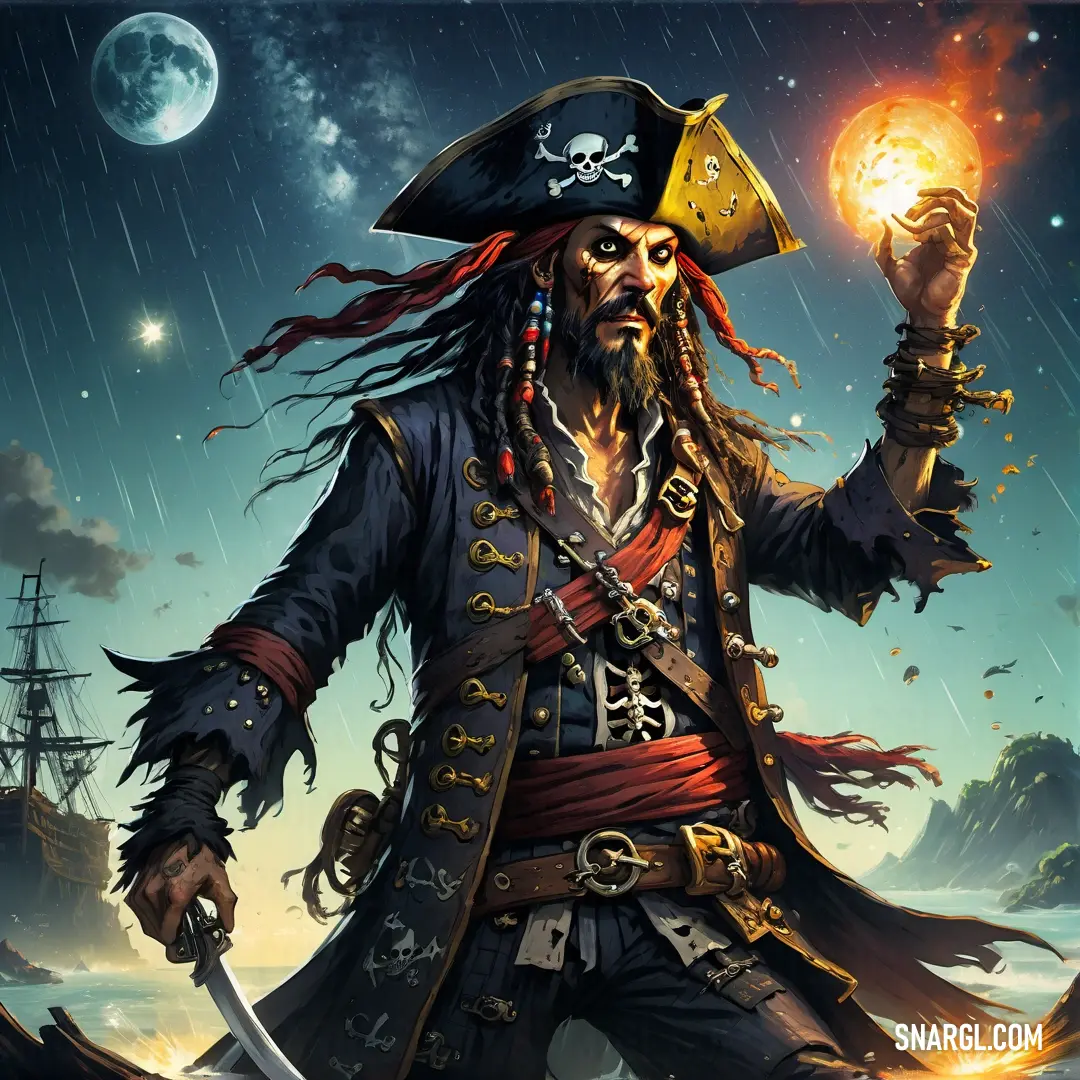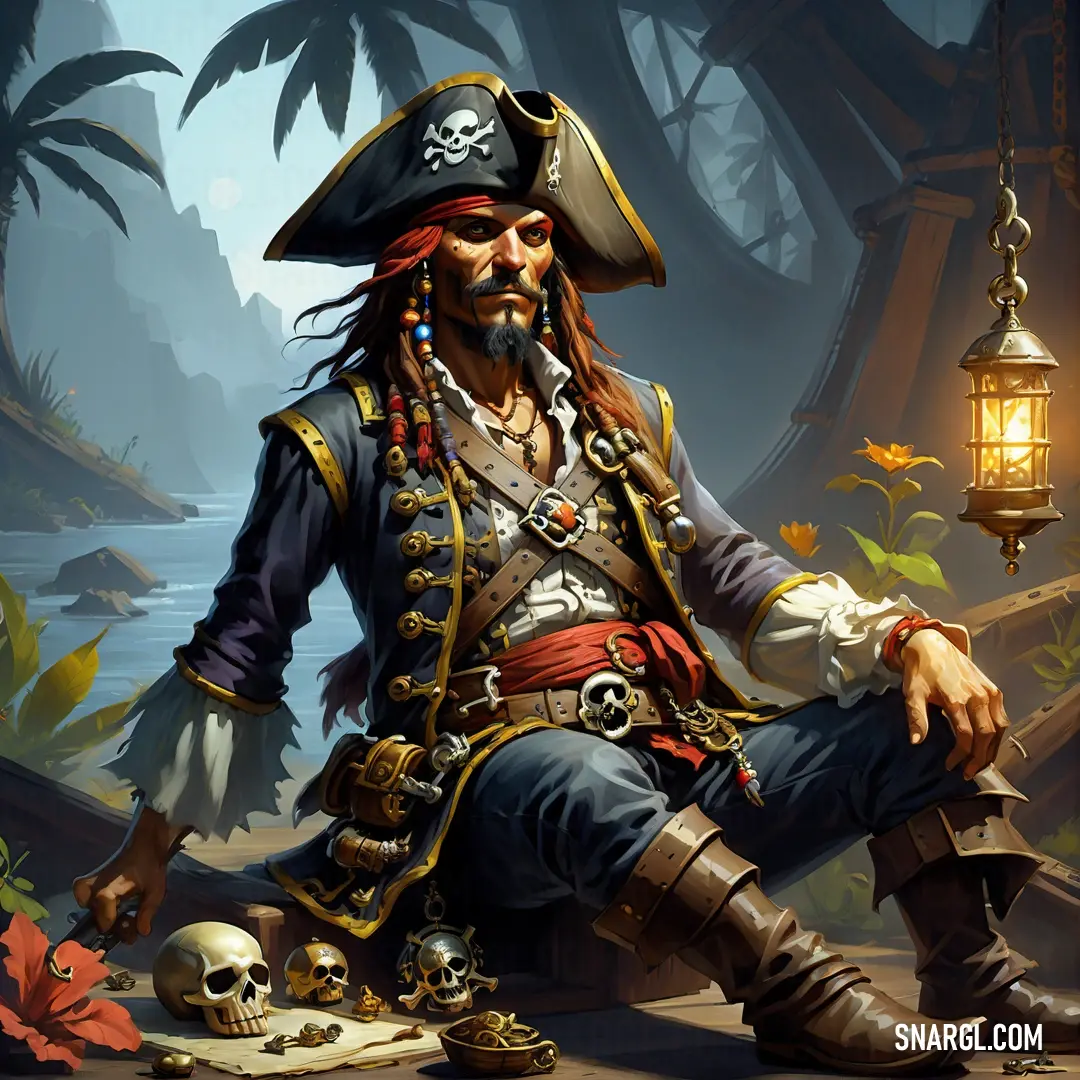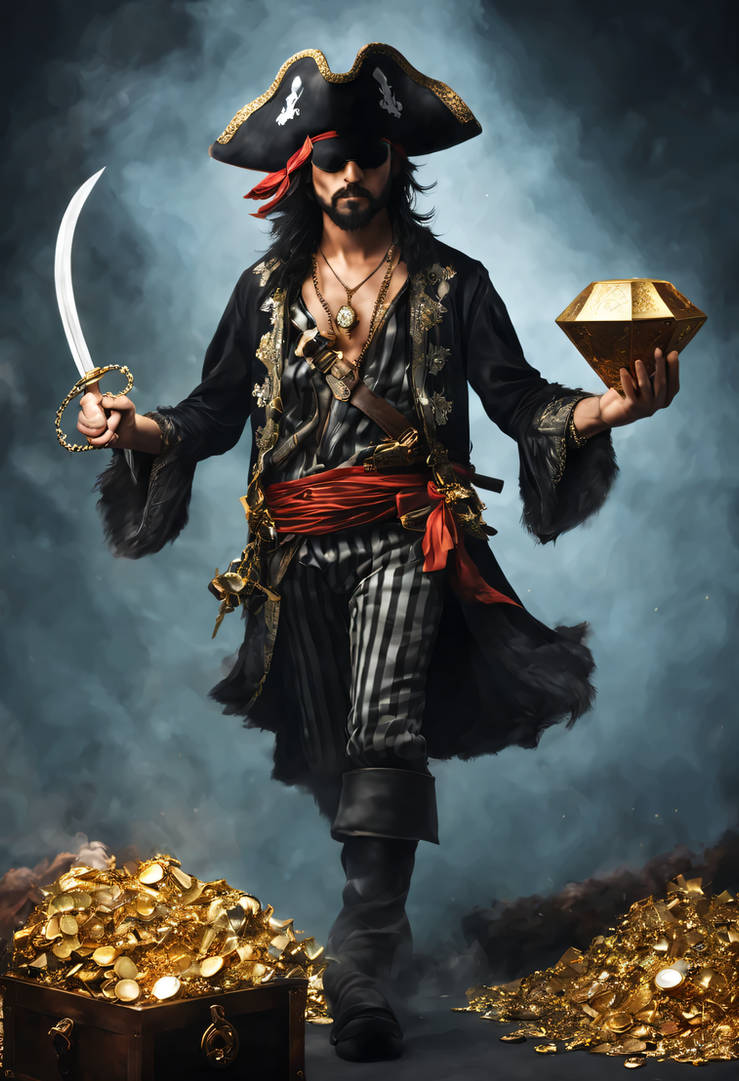Pirate Boat Names: Unveiling The Secrets Of Legendary Vessels
Have you ever stopped to think about the names given to those famous pirate ships? It's a bit fascinating, isn't it, how a vessel, which is really just a boat, can get a name that makes it sound so fearsome or even a little mysterious. These aren't just any old labels; they're like a declaration, a warning, or sometimes, a symbol of hope for the crew. So, you know, when you hear "pirate ship," what comes to mind is often tied to its name, giving it a whole personality.
For centuries, the sea has been home to all sorts of characters, and those who chose a life of piracy, well, they certainly made their mark. We know them as pirates, a word that, in some respects, goes back to the Greek "peiratēs," meaning a brigand. It covers a pretty wide range of nautical misbehavior, from coastal raids to deep-sea adventures. These folks, you see, needed vessels that could carry them across the vast oceans, and those vessels, the pirate ships, were just as important as the crews themselves, perhaps even more so.
Understanding these names helps us get a feel for the pirate life, what they valued, and what they wanted others to think of them. It’s not just about a cool sound; it's about the very essence of their existence on the open water. A good name could strike fear into merchant sailors, or it could inspire loyalty among a crew that, quite often, had very little else to rely on. So, let's take a look at what made these names tick, and how they still capture our imagination today, you know, even centuries later.
Table of Contents
- The Allure of Pirate Boat Names
- What Makes a Pirate Ship a Pirate Ship?
- Iconic Vessels and Their Notorious Owners
- How Pirates Chose Their Ship's Names
- Crafting Your Own Legendary Boat Name
- Frequently Asked Questions About Pirate Boat Names
The Allure of Pirate Boat Names
There's something incredibly captivating about pirate boat names, isn't there? They just seem to tell a story all on their own. For many, these names bring up images of adventure, hidden treasure, and daring escapades on the high seas. It's almost as if the name itself has a kind of magic, hinting at the wild life led by those who sailed under them. We're talking about names that evoke a sense of danger, excitement, and a little bit of the unknown, too.
This fascination isn't new; it's been around for ages. People love to imagine themselves on a grand ship, sailing the seas, and the name of that ship is a big part of that daydream. Whether you're interested in the true history of maritime rogues or just enjoy the idea of swashbuckling tales, the names of their vessels are a key part of the appeal. They really are, you know, quite memorable.
What makes these names so sticky in our minds? Perhaps it's their boldness, or maybe their cleverness. They often give us a glimpse into the minds of the pirates themselves, what they feared, what they desired, and what they wanted to project to the world. It's a bit like a brand, isn't it, a way to make an impression on anyone who saw their sails on the horizon. And that, you know, is pretty powerful.
- Most Watched Television Interviews
- Maui Chapman
- Adam Sandlers Siblings
- Kenneth Branagh Net Worth
- How Tall Was John Denver
What Makes a Pirate Ship a Pirate Ship?
So, what exactly makes a vessel a "pirate ship"? Well, it's pretty straightforward, actually. Those who conduct acts of piracy are called pirates, and vessels used for piracy are called pirate ships. It's that simple. These ships weren't always purpose-built for piracy; often, they were captured merchant ships, then refitted and repurposed for their new, rather unlawful, calling. They were, in a way, transformed from peaceful carriers to instruments of maritime misbehavior.
The Earliest Days of Piracy
Piracy, you know, isn't a modern invention. The earliest documented instances of piracy were in the 14th century BC, when the sea was a very different place. Even back then, people were taking to the water to attack and steal from other ships. The term "pirate" itself is the most general of the four terms used to describe sea thieves, originating, as we mentioned, with the Greek "peiratēs." It can be applied to a wide range of nautical misbehavior, including coastal raids and more organized attacks. It’s a very old profession, in a way.
Life Aboard a Pirate Vessel
Life on a pirate ship, you might think, was all chaos and anarchy, but that's not quite the full picture. Far from the Hollywood image of complete disorder, pirate crews often signed articles to strictly control life at sea. For example, Edward Low, who was a rather mean pirate of the Golden Age, actually banned drunkenness at certain times. These rules helped keep things running smoothly, which was pretty important for survival on the open water. It’s almost surprising, isn’t it, how organized they could be?
For many, joining a pirate crew was a choice born of desperation or a desire for something better. Sailors, you see, were often underpaid, routinely cheated of their wages, beaten at the slightest provocation, and often forced to serve. It should surprise no one that many would willingly choose a different path. For Black people, in particular, pirate ships were often the only environment in which they could earn money, power, and freedom. Of the 10,000 or so pirates that existed during the Golden Age, a significant number found a unique kind of liberty on these ships, which is a rather powerful thought, actually.
Iconic Vessels and Their Notorious Owners
When we talk about pirate boat names, some truly legendary vessels come to mind, each tied to a famous, or infamous, captain. These ships became extensions of their captains' reputations, carrying their names and deeds across the waves. They were, in a way, living legends themselves, too.
Bartholomew Roberts and His Fleet
Bartholomew Roberts, often called Black Bart, was arguably the most successful pirate of the Golden Age of Piracy. He was estimated to have captured more than 470 vessels during his career, which is a truly astonishing number. While specific names of all his ships aren't always highlighted, his flagship was famously called the "Royal Fortune." This name, you know, speaks volumes about his aspirations and perhaps his luck. It's a grand name for a pirate who achieved such incredible success, really.
Blackbeard and the Queen Anne's Revenge
With his fearsome appearance, Blackbeard is often the first pirate many people think of. His ship, the "Queen Anne's Revenge," is perhaps one of the most famous pirate vessels of all time. This name, you know, is quite evocative, suggesting a royal betrayal or a personal vendetta against the established order. It certainly added to his terrifying image, which was a bit of a strategic move, too. The ship itself was a formidable warship, captured and refitted, becoming a symbol of Blackbeard's immense power and influence on the seas.
Bellamy and the Whydah Gally
As a pirate, Bellamy, often known as "Black Sam" Bellamy, captured 53 ships. Among these, the "Whydah Gally" stands out. This was originally a slave ship, carrying a fortune in gold, silver, and other goods. When Bellamy captured it, he turned it into his flagship. The name "Whydah" came from the port in West Africa from which it had sailed. This vessel, you know, represents a stark example of how pirate ships were often repurposed, turning instruments of commerce into tools of rebellion and wealth redistribution, at least from the pirates' perspective. It’s a pretty powerful story, actually, about how a ship’s purpose could change so dramatically.
Edward Low's Reign of Terror
Edward Low was, by many accounts, the meanest pirate of the Golden Age. While specific names of all his ships are less commonly known than, say, Blackbeard's, his reputation for cruelty was widespread. His ships, regardless of their names, were feared because of the man who commanded them. This shows that sometimes, you know, the captain's reputation could overshadow the vessel's name itself, making any ship he sailed on a symbol of terror. He really was, in a way, a force to be reckoned with.
How Pirates Chose Their Ship's Names
So, how did pirates actually come up with these names for their ships? It wasn't just random, you know. There was often a method to their madness, a way of signaling their intentions or their identity to the world. These names served multiple purposes, from striking fear into their victims to inspiring their own crews. It’s a bit like psychology, actually, using a name to influence perception.
Reflecting Fear and Intimidation
Many pirate ship names were chosen to instill fear. Names like "Sea Serpent," "Revenge," or "Terror" were meant to send a clear message: surrender or face dire consequences. The sight of a ship with such a name on the horizon would, you know, cause immediate panic among merchant sailors. This was a very practical strategy; if a ship surrendered without a fight, it saved the pirates time, effort, and gunpowder. It was, in a way, a form of psychological warfare, making the name a weapon in itself.
Symbols of Freedom and Rebellion
For many pirates, their ships represented a break from the harsh realities of conventional society. As "My text" points out, sailors were often treated poorly, so joining a pirate crew offered a chance at a different kind of life. Names like "Liberty," "Freedom," or "Defiance" could reflect this desire for autonomy and a rejection of oppressive systems. These names would resonate deeply with crews who had often been exploited and abused, providing a sense of shared purpose and identity. It’s a bit inspiring, isn't it, how a name could embody such a powerful ideal?
A Touch of Dark Humor
Some pirate names also had a darker, more cynical humor to them. Perhaps a name like "Jolly Roger" (though more commonly associated with the flag) or something seemingly innocuous could hide a sinister intent. Or, they might use names that were ironic, reflecting the grim realities of their profession with a wry smile. This kind of naming, you know, shows a certain personality, a willingness to laugh in the face of danger, which is a pretty common trait among those who live on the edge.
Crafting Your Own Legendary Boat Name
Whether you're naming a real boat, a character's ship in a story, or a vessel in a game, picking a pirate boat name can be a lot of fun. It’s about capturing a certain spirit, a particular feeling, and making it memorable. Here are some thoughts on how to come up with a name that truly stands out, you know, something special.
Consider the Vibe
First off, think about the overall feeling you want the name to convey. Do you want it to sound terrifying and menacing, like a shadow on the waves? Or perhaps something more mysterious and elusive, like a ghost ship? Maybe you're aiming for something bold and adventurous, full of daring and glory. The vibe, you know, sets the stage for everything else. A name like "Silent Shadow" gives a very different feeling than "Thunderbolt," doesn't it? It's about setting the mood.
Think About the Crew
Who sails this ship? Are they a motley crew of misfits seeking freedom, or a disciplined band of plunderers? The crew's personality, their motivations, and their background can really influence the name. If they're all about striking it rich, a name hinting at treasure or fortune might fit. If they're rebels against authority, something about breaking chains or defying kings could work. This connection, you know, makes the name feel more authentic to the ship's story.
Play with Words
Don't be afraid to experiment with different words and combinations. Think about strong nouns and vivid adjectives. Words like "phantom," "gale," "kraken," "dagger," "whisper," or "shriek" can be great starting points. Combine them in unexpected ways. "Phantom's Grasp" or "Gale's Fury" sound pretty cool, don't they? You can also look at historical terms, mythological creatures, or even geographical features for inspiration. Sometimes, just a little twist on a common phrase can make a name truly unique. You might even try alliteration or rhyming for a catchy feel, too.
You can also draw inspiration from the real history of pirates. For example, consider the idea that pirate ships were places where people found "money, power, and freedom." How could you weave those concepts into a name? Perhaps "Freedom's Price" or "Fortune's Call." These names, you know, carry a deeper meaning, connecting to the very reasons people became pirates in the first place. It's about giving the name a story, really.
And remember, a pirate ship is a vessel used for piracy. It's a tool for "nautical misbehavior." So, a name that hints at mischief or cunning could also be very fitting. Think about the definition of a pirate: "one who commits or practices piracy." How can you embody that in a name? "The Marauder's Kiss" or "The Brigand's Bargain" could be interesting. The goal is to make the name resonate with the very essence of what a pirate ship represents, which is pretty neat, actually.
For more insights into the fascinating world of maritime history and the figures who shaped it, you might want to explore resources like the National Maritime Museum. You can also learn more about pirate history on our site, and find out more about famous pirate captains right here.
Frequently Asked Questions About Pirate Boat Names
People often have questions about pirate ship names, and that's totally understandable! They're a really interesting part of pirate lore. Here are some common things folks wonder about.
What are some famous pirate ship names?
Some of the most well-known pirate ship names include the "Queen Anne's Revenge," which was Blackbeard's ship, and the "Whydah Gally," captained by Bellamy. Bartholomew Roberts, a very successful pirate, sailed on a ship called the "Royal Fortune." These names, you know, have really stuck in our collective imagination because of the legendary figures who commanded them.
How did pirates name their ships?
Pirates often named their ships to reflect their intentions or their personality. They might choose names that instilled fear, like "Terror" or "Revenge," to intimidate their targets. Sometimes, the names symbolized the freedom and rebellion they sought, or perhaps they carried a touch of dark humor. It wasn't always a formal process; sometimes, the name might just stick after a particularly memorable event or a characteristic of the ship itself. It's a bit like how nicknames come about, really.
What makes a good pirate ship name?
A good pirate ship name is often memorable and evokes a strong image or feeling. It usually sounds a bit bold or mysterious. It might hint at danger, adventure, or the pirate's specific goals, like seeking fortune or freedom. The best names are often short, punchy, and easy to remember, so they can be shouted across the waves or whispered in a tale. It's about making an impact, you know, with just a few words.
- Marsai Martin Parents
- Cardi Bs Phone Number
- Daniella Karagach Age
- Greg Covey Net Worth
- Nosey Neighbors Of Elkhart County

Pirate - A Comprehensive Guide to the Legendary Pirate Character

Pirate. What is the Pirate's ultimate goal? What are the Pirate's

Pirate by rogbrinas on DeviantArt